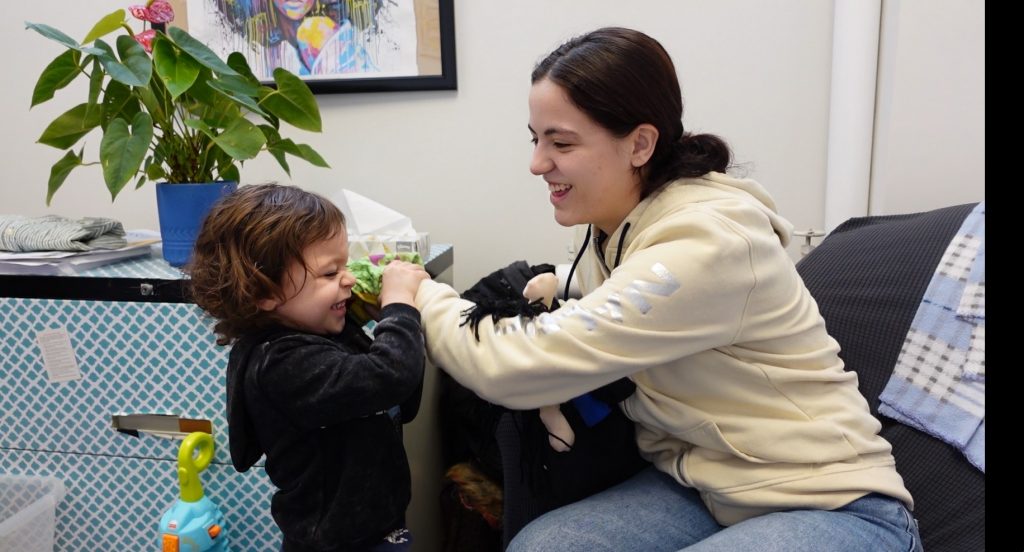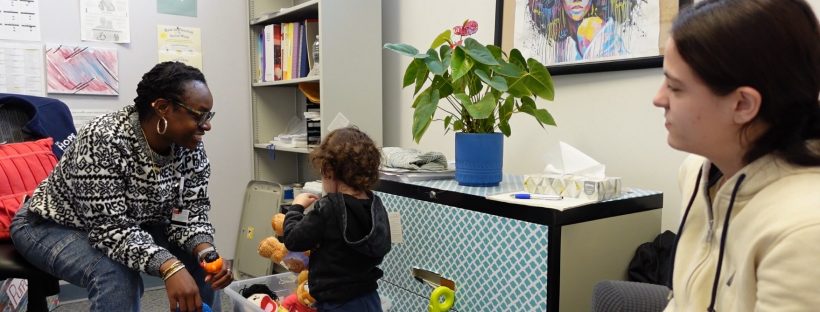When Sabrina DeRoller found out she was pregnant, she faced a lot of unknowns.
“I talked with my doctor about not feeling like I was prepared to be a mom,” said Sabrina. “I had a lot of anxiety and questions about what was going to happen with me and my baby.”
Video: Building Healthy Children – Supporting and strengthening families from the start

A Helping Hand from Building Healthy Children
That’s when Tiffany Smith, a mental health therapist at the Rochester-based Building Healthy Children (BHC) program, stepped in to offer her the support she needed.
Building Healthy Children partners with young mothers providing access to care and the resources they need to raise healthy families. With the support of an Excellus BlueCross BlueShield Member and Community Health Improvement Grant, the program has expanded its reach and impact on young families by providing home-based support services that are integrated with a child’s pediatric practice. Families work with a team of workers: an Outreach Coordinator and a Mental Health Therapist.
The Outreach Coordinator offers transportation and support around children’s health needs (e.g., well child visits, immunizations, lead checks), as well as assistance with obtaining safe housing, and setting up educational and employment goals.
They work closely with a Mental Health Therapist who provides:
- evidenced-based therapeutic support around parenting and child development,
- parent-child relationships,
- maternal depression.
Working with the Mount Hope Family Center and URMC Social Work Division, the BHC collaborative approach is improving the quality of hundreds of lives.
Empowering Young Mothers
“I always tell my mom’s that I am their cheerleader; I’m giving them resources and information,” said Tiffany. “Most of it is parenting: what they are experiencing as they are developing as young moms, support they have or don’t have, depression, understanding how childcare works, and a variety of things they are processing.”

Whether its help getting their child necessities like a stroller, crib, and diapers, or providing mental health screenings and treatment, Sabrina is part of a program that is setting out to promote positive parenting and support young mothers as they transition into parenthood.
Addressing Complex Needs
“This program began because there was a recognition that the needs of teen families in our community can be many and complex, and a coordinated effort is essential in supporting caregivers in achieving their hopes and dreams that they have for themselves, while adding the hopes and dreams that they have for their children, and trying to do that as they navigate all that comes with becoming a parent at a young age.. said the program’s Clinical Director Robin Sturm.
“We partner with our parents because they are the expert on their child, and we hope that they can feel empowered and confident in their parenting role. And as a program, we strive to enhance the health and well-being of infants and children through our home-based services– while enhancing and encouraging positive parent-child relationships and promoting healthy child development for kiddos.
The outcomes are impressive. “Ninety-six percent of the families we see are up to date with their well-child visits and immunizations, and more than 97 percent of the women have completed a maternal mental health screening to identify potential opportunities for intervention early on,” Robin said.
Inspiration Through Resilience
Tiffany says moms like Sabrina inspire her. “They are resilient, amazing and they make me stronger. I love to see the journey, to see them wanting this and then to see them succeed,” she said.
Member and Community Health Improvement Grant
Funding from Excellus BlueCross BlueShield is in the form of a Member and Community Health Improvement grant to improve the health and quality of life of its members and the communities the health plan serves, especially the marginalized or minoritized. MACHI grants are multi-year initiatives involving multiple community organizations with specific objectives and measurable outcomes.
To learn more about Excellus BlueCross BlueShield’s Community Investments and Partnerships visit ExcellusBCBS.
Please visit Building Healthy Children to learn more.
To hear more about Tiffany and Sabrina’s story, visit here.



















